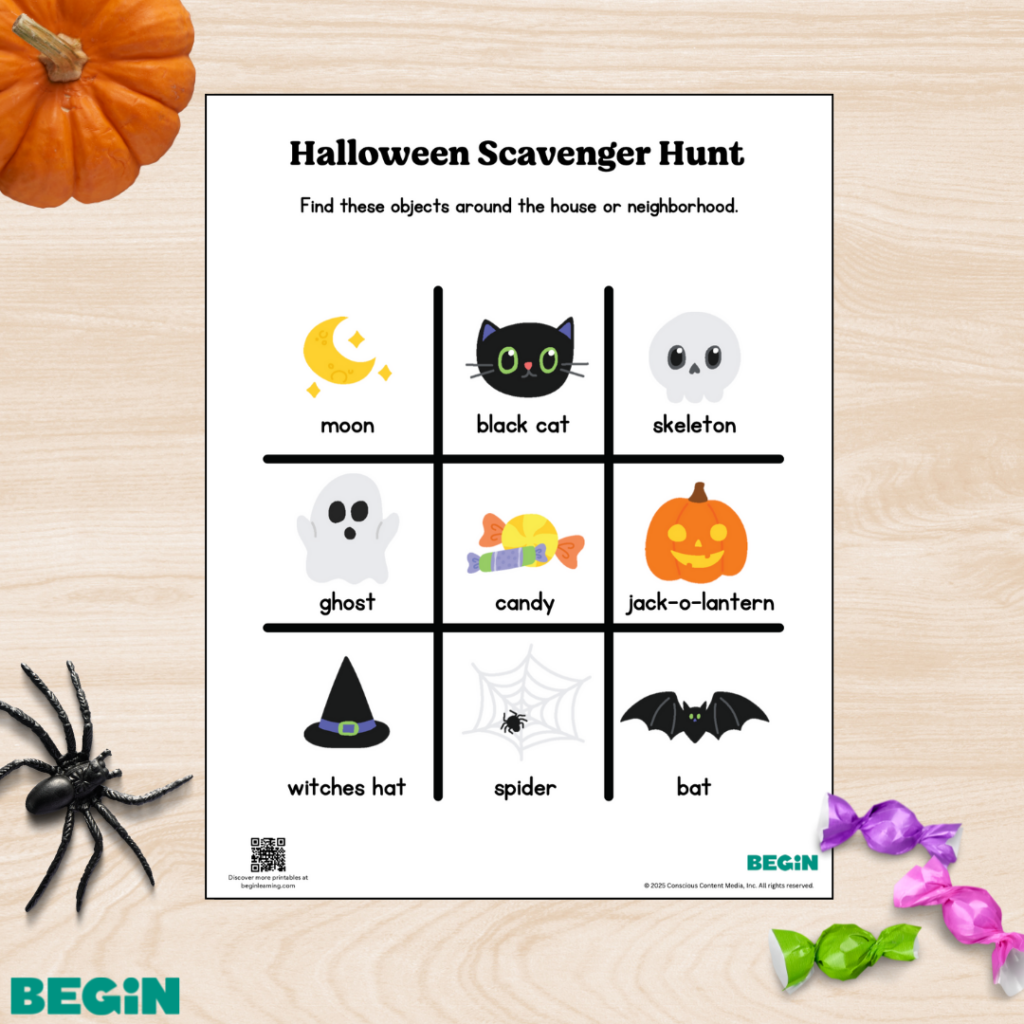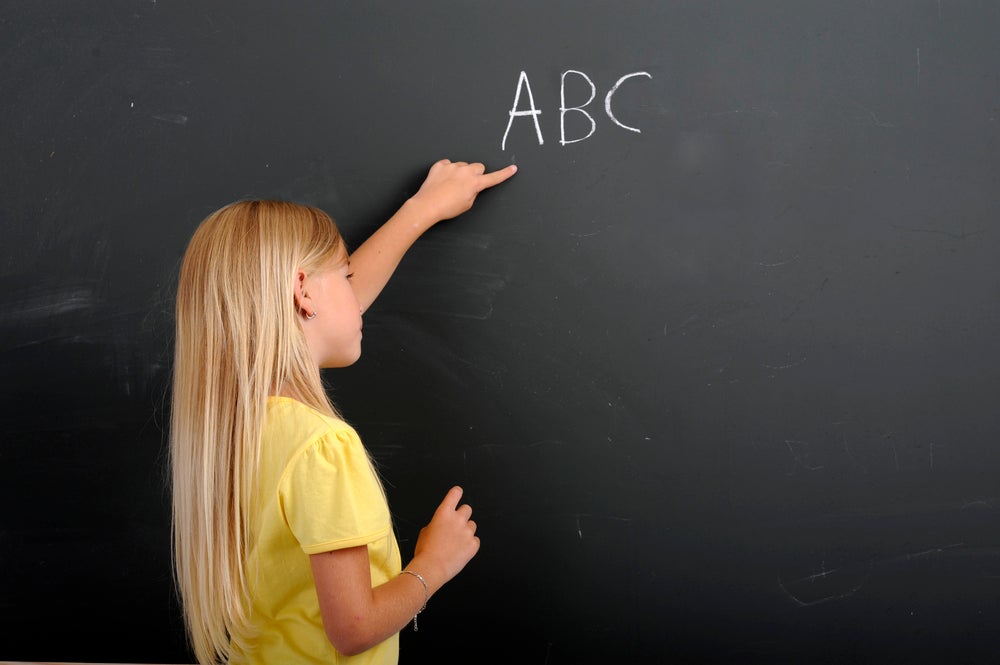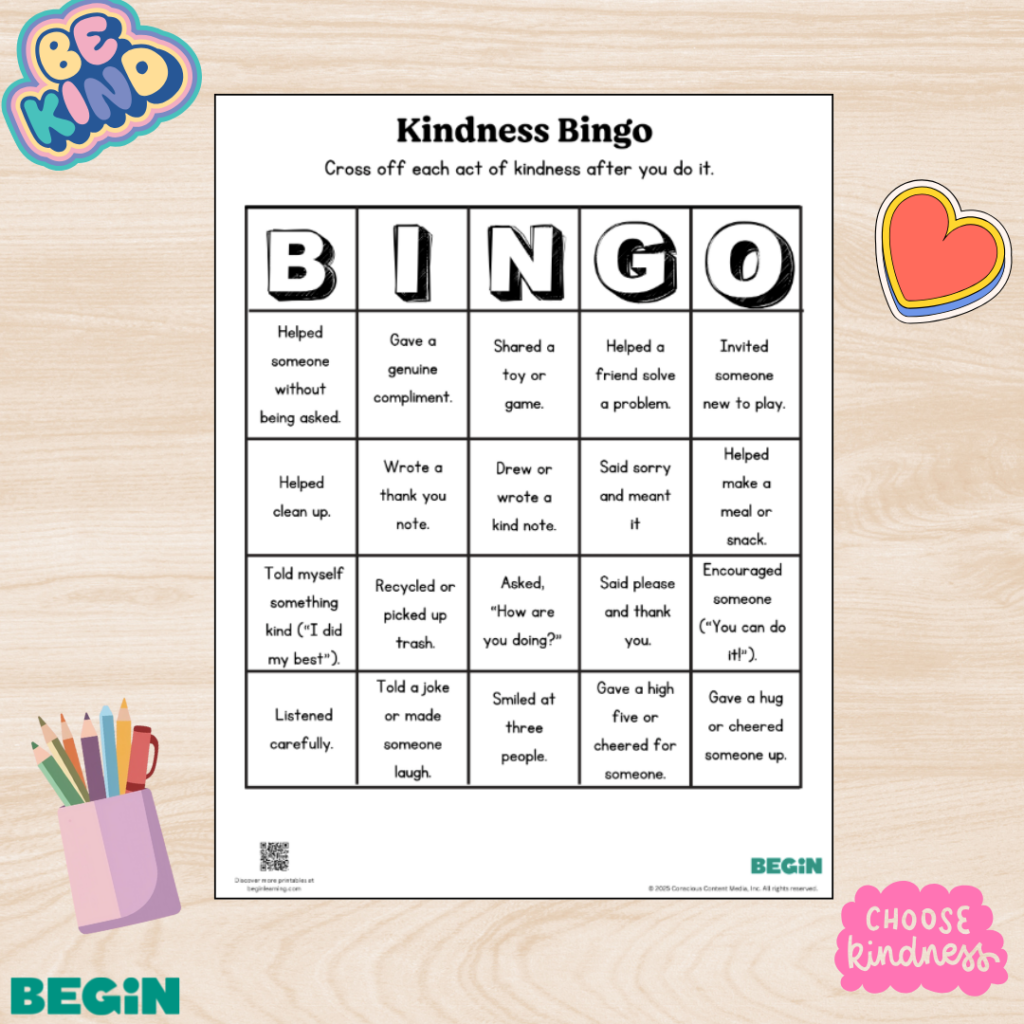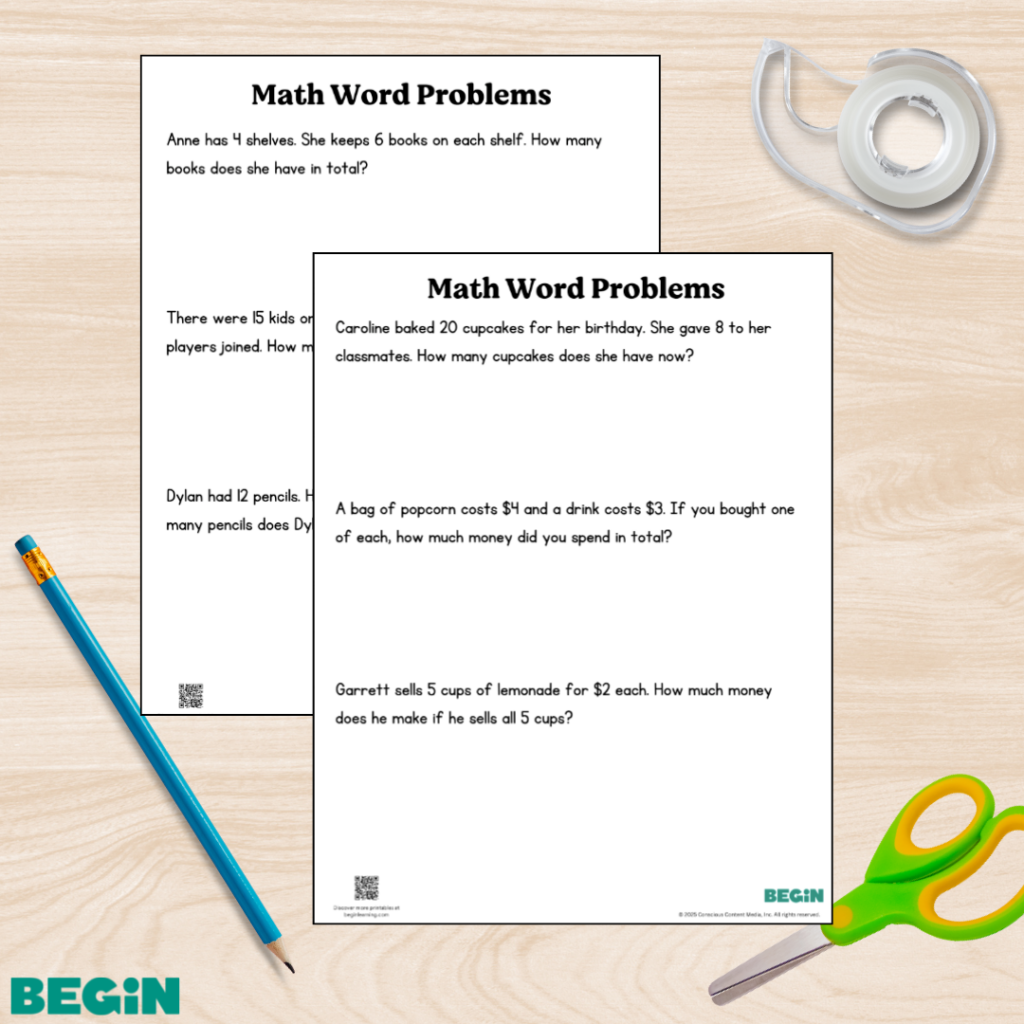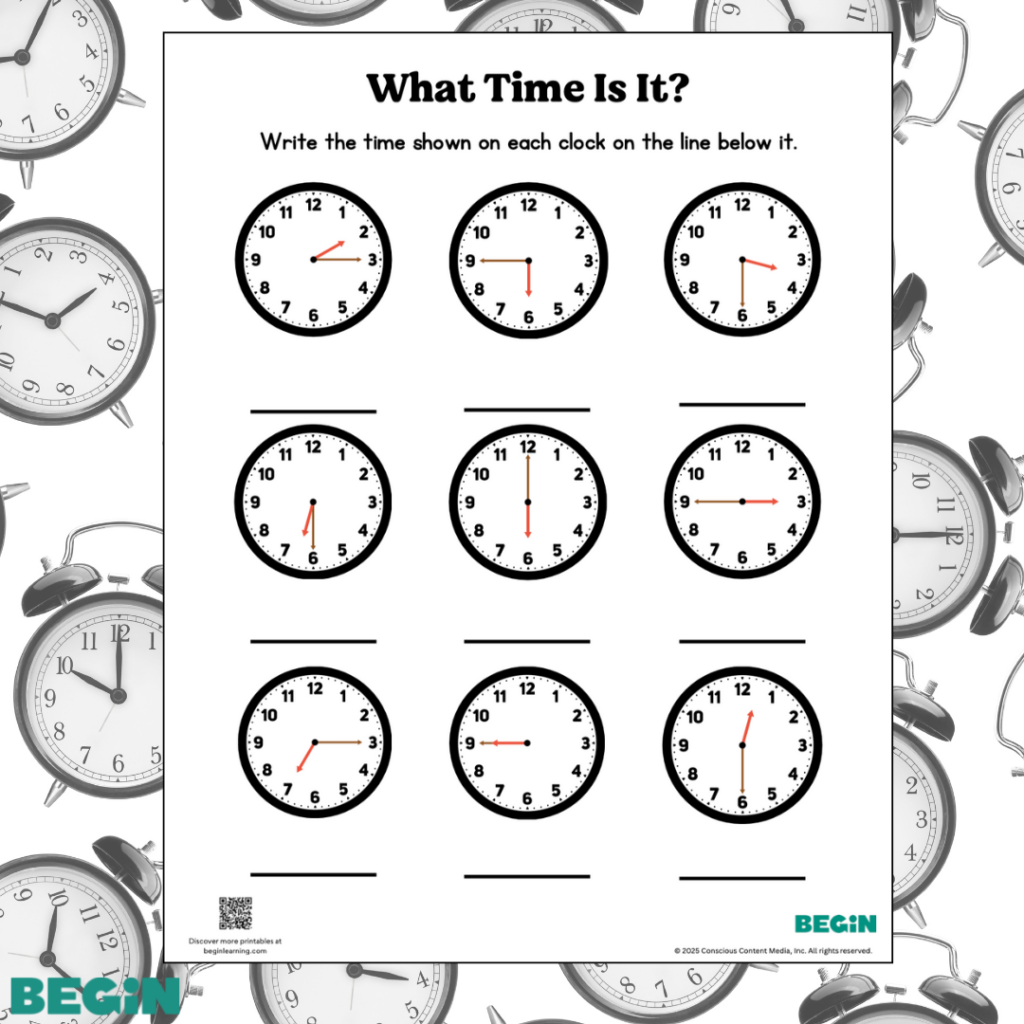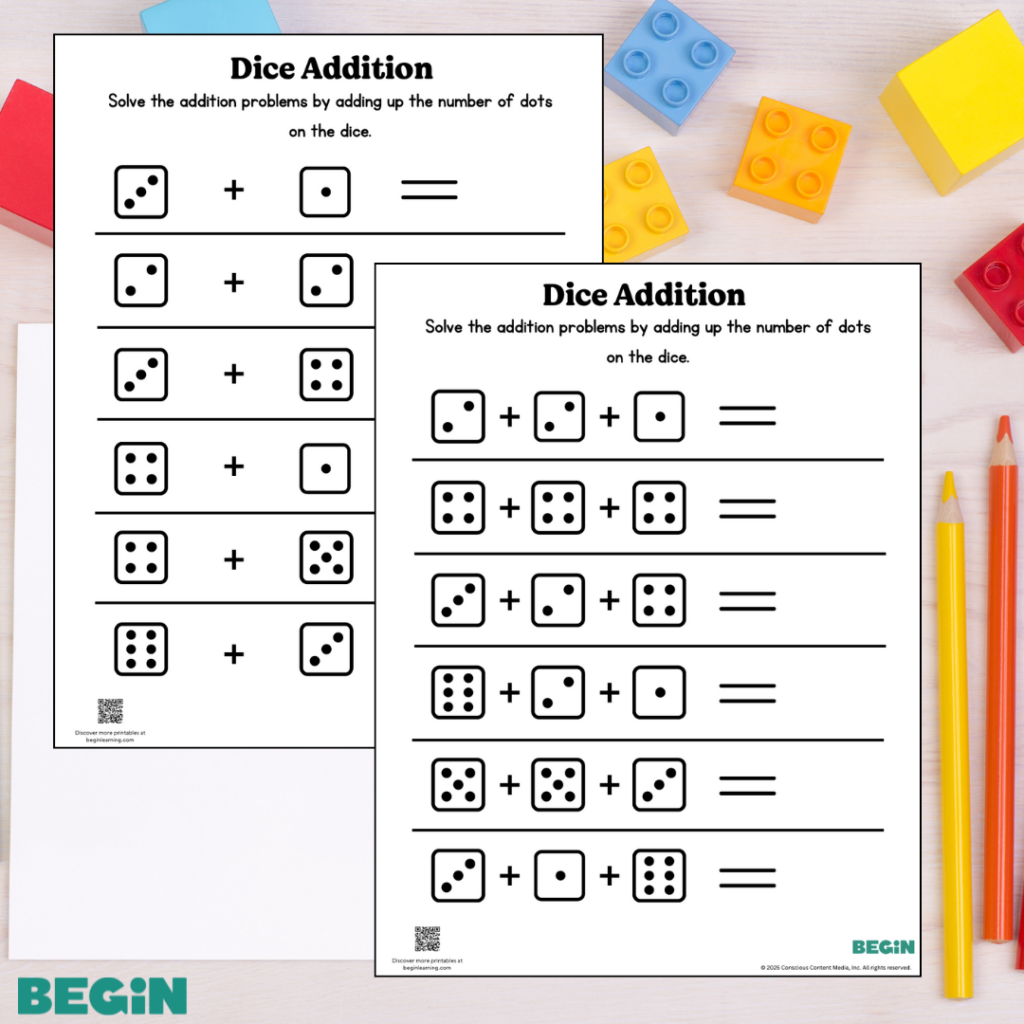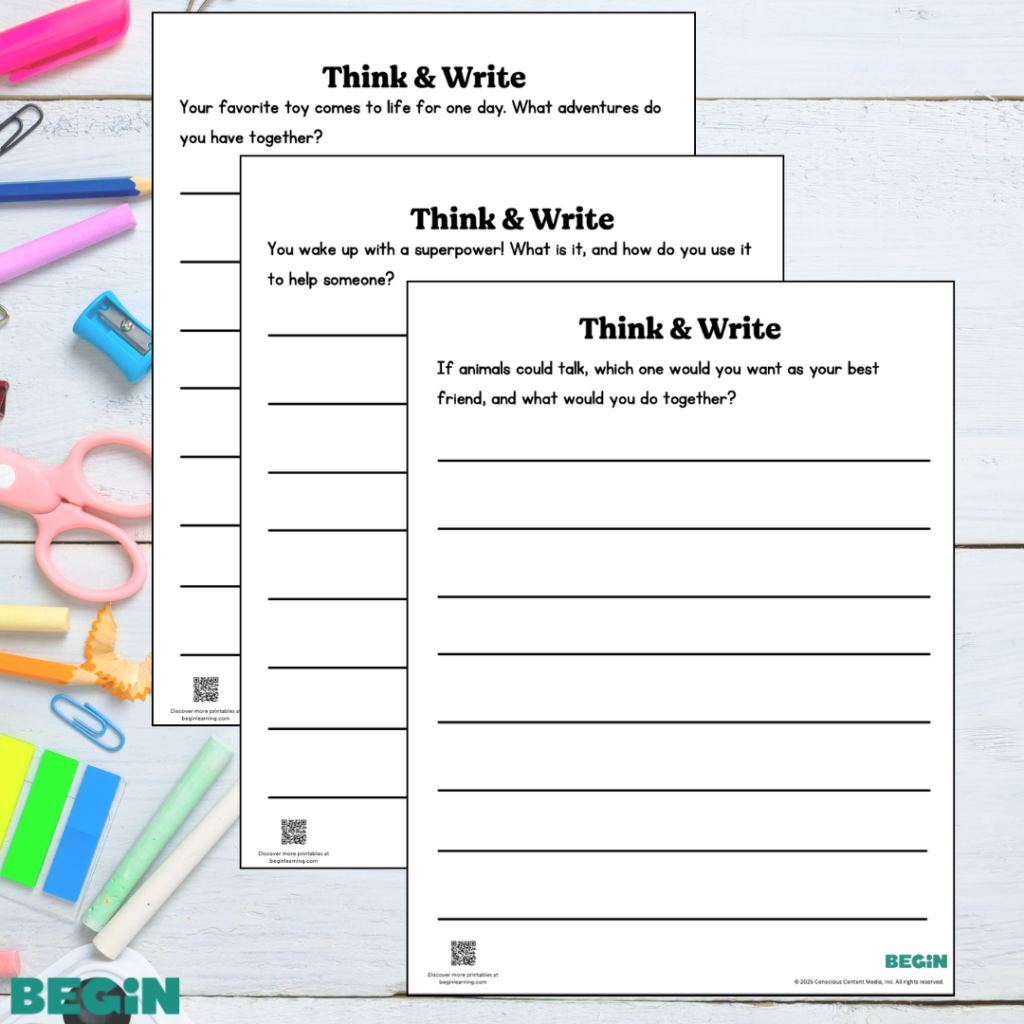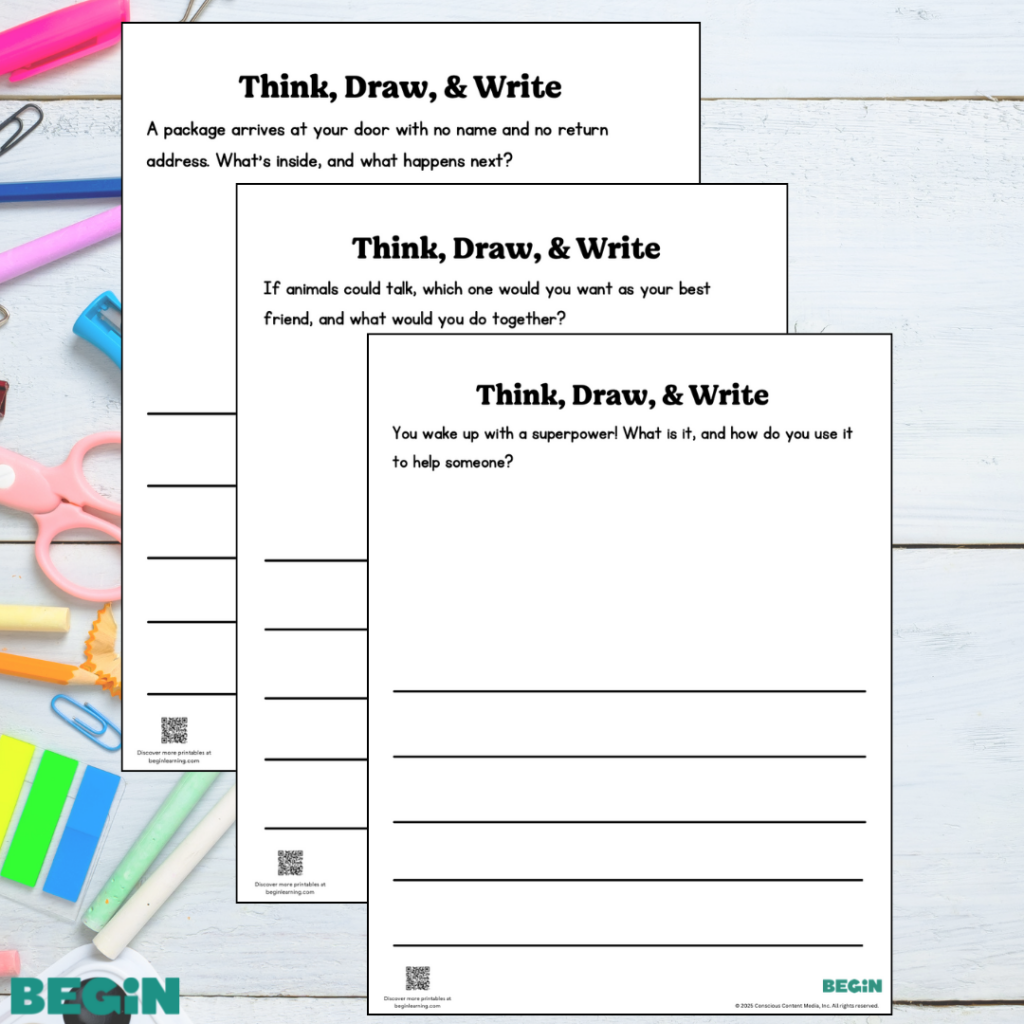Teaching vowels to kids—especially long and short vowel sounds—can be tough. But understanding vowels helps us learn to read and spell—essential core skills included in the Begin Approach to helping kids thrive in school and life.
Kids with strong Core Skills do better in school, so it’s worth pushing through the challenge of vowels to help kids understand them. Curious how you can help? We’ve got you covered!
The Short Cut
- Kids are ready to learn about vowels when they can hear vowel sounds within a word
- Short vowel sounds (like the a in “bat” or the o in “top”) occur in simple words, so they’re a good place to start
- Long vowel sounds (vowels that sound like their name, like the a in “bake”) need more explanation and are best for kids who’ve already learned short vowels
- Teaching vowels can be fun! You can tap into kids’ natural love of play with vowel games so it doesn’t feel like a chore
What Makes Vowel Sounds Hard for Kids
Most kids pick up consonant pronunciations much more quickly than vowels. Why is that?
One of the challenges with vowel sounds is that they can’t exactly be “felt” in the mouth. With consonants, kids can feel the friction created while using their tongue, lips, or teeth to produce the sounds. To produce a vowel sound, you only need to adjust the shape of your mouth.
Then there’s the challenge of distinguishing between long and short vowels or two similar vowel sounds. In a nutshell, learning vowels can be tough!
But have no fear; we’re here to help! We’ve compiled a step-by-step guide you can use to help your child finally connect the dots with both short and long vowel sounds.
When Is Your Child Ready to Learn Vowels?

It’s challenging to teach your child vowel sounds if they can’t identify them. So one of the most important signs that a child is ready to learn vowel sounds is when they can hear the vowel sounds in simple words.
For instance, let’s say your child tries to spell a simple CVC (consonant, vowel, consonant) word like “cat.”
Even if they misspell the word by writing “cet” instead of “cat,” this is still a moment to celebrate because it indicates that your child can hear that there’s a letter between the C and the T.
Once you think your child is developmentally ready to start learning more about vowels, you can move on to short vowel sounds.
Tips for Teaching Short Vowel Sounds
Since words with short vowels are spelled more consistently than words with long vowels, they’re a great place to start when teaching vowel sounds to kids.
1) Begin with the Names of the Vowels

Teaching your child A, E, I, O, U (and sometimes Y) is the first step in helping to familiarize them with vowels. We recommend taking these one vowel at a time to avoid overwhelming them.
The good news is that there are various tactics you can use to help kids remember their vowels.
Besides sounding them out, you can also help your child create three-dimensional letters with something as easy and accessible as play dough. To help emphasize the differences between the letters, use a different color for each vowel.
As kids feel and create vowels, more of their senses will be engaged, and this will help them get familiar and comfortable with the five vowels and their sounds.
2) Differentiate Between the Vowels
This point on our list is connected to the previous one. Still, it deserves its own emphasis because it can be easy for kids to struggle with differentiating between the vowels.
The example we used earlier of a kid spelling “cat” as “cet” is common because the sounds are so similar to each other. This is why it’s important to emphasize that the letters are distinct.
To add some fun into your child’s learning, you might consider using stick puppets made with the five vowels. Simply attach a printout of each letter onto a popsicle stick, and then let your imagination run wild as you give them personalities and adventures!
A can go to the store with E, I can head out to the beach with O, and so on. While acting out your scenes, remember to emphasize the differences between the letters and keep sounding the vowels out clearly.
3) Introduce Word Families for Simple CVC Words
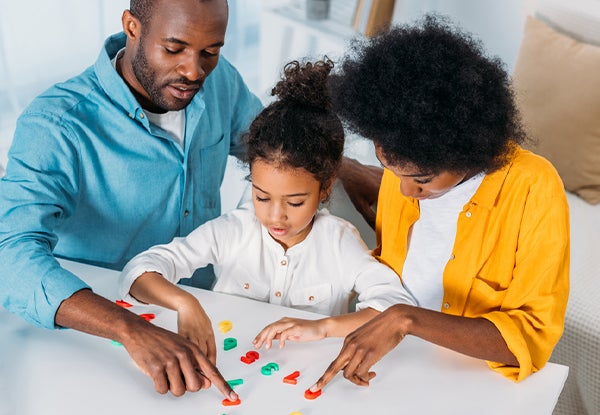
Word families are groups of words that have a common pattern or features. Helping children learn these allows them to spell and sound out related words.
For example, a child who learns the word family -at will have an easier time spelling cat, mat, hat, etc.
Remember to take it one word family at a time. This will help prevent your child from feeling overwhelmed with all the new information.
We recommend these activities for working on word families:
- Say a word like “hat” and ask if it has the /a/ sound or the /i/ sound. Focus on sounding the letters out, not writing them, so your child can hear the differences better.
- Say two words and ask which has /o/ as the middle sound.
- Make a Tic-Tac-Toe board and put a vowel in each square. As you play, ask your child to identify the vowel with its short sound before placing their mark in a square.
- Sound out CVC words by emphasizing the phonemes. For example, say /t/…/a/…/p/… and then blend the sounds together into tap.
- Place a t and a p with a space in between. Ask your child to fill in the missing letter that will form “top.”
- Switch the vowels. For this, you can play with magnetic letters. Ask your child to turn “tap” to “tip” and then to “top.”
Here are some great words with short vowel sounds to practice at home:
Short “A” Sound Examples
- cap
- bat
- bad
- cat
- dad
- lap
- tap
Short “E” Sound Examples
- bed
- get
- pen
- bet
- wet
- fed
- net
- ten
Short “I” Sound Examples
- nin
- sip
- tip
- zip
- did
- fit
- nip
- win
Short “O” Sound Examples
- rod
- cod
- jog
- dot
- fog
- mop
- pot
- top
Short “U” Sound Examples
- bun
- cut
- pup
- sun
- sum
- run
- fun
- hug
Tips for Teaching Long Vowel Sounds
1) Form Long Vowel Sounds

Although long vowel sounds are typically easier for kids to learn, we normally teach short vowels first. Why is that? It takes two vowels to make a long sound, and this can be tricky for kids to understand at first.
To get started with long vowel sounds, we begin teaching the silent e. It’s important for kids to understand that every vowel will change its sound when a silent e is put after the CVC form of a word.
For instance, if you put an e after the CVC word tap, the word changes to tape, and the vowel sound produced changes.
To help your child grasp this concept, begin with phonemic awareness. Ask them:
- Are tap and tape the same?
- Say the individual sounds slowly — t-a-p and t-ae-p.
- What changed?
2) Demonstrate with Manipulatives
You can also use magnetic letters and flip cards to help illustrate the power of the silent e.
First, show your child the letter a. Make the short sound and then explain that you will give the power to its own name. Who can give the power? E! Tap the magnetic e on the magnetic a, adding it to the end of the word after, and—voila!—you now have a new word.
Using magnetic letters, you can change tap to tape, bit to bite, dot to dote, and so on. Your child will hear that the sound changes, and using magnetic letters will help them see which vowel contributes to the change in sound.
You can also use flip cards to demonstrate this concept. Fold the last eighth or so of an index card, and then write a CVC word, like tap, on the unfolded part and an e on the folded part. When you unfold the card, the word will change from tap to tape!
Note: The long o and u sounds can be a bit more complicated, so we recommend holding off on those until your child has gotten a good grasp on the others.
3) Correct the Spelling
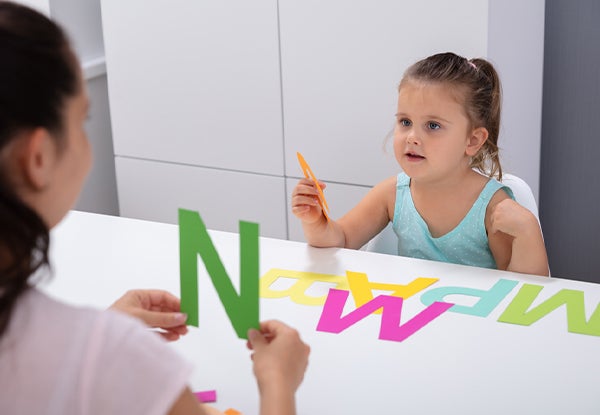
At Begin, we’ve seen firsthand how tapping into the power of play helps kids with literacy. To help your child gain a better understanding of long vowel sounds, why not play a game to strengthen their knowledge?
To play this game, show your child the incorrect spelling of a CVC word and have them correct it. For example, using magnetic letters, spell out f-i-n-o but pronounce it as fine. Now your child, who’s learned the power of the silent e, will be able to replace the o with an e.
Here are some great words you can use for this activity:
Long “A” Sound Examples
- bake
- lake
- fame
- date
- fate
- cake
- make
Long “I” Sound Examples
- hide
- fne
- time
- line
- mine
- pine
- wife
- ride
Long “O” Sound Examples
- joke
- rose
- woke
- poke
General Tips for Teaching Vowel Sounds

As we’ve discussed, there are some specific activities and techniques that contribute to the way kids learn short and long vowel sounds.
But there are also some general tips and techniques that you can apply to all the learning activities your child encounters when they’re learning their vowel sounds.
Here are some of the most effective.
Focus on Phonetics First
Young children are primed to learn by hearing. That’s why they know how to communicate through the spoken word before they can identify the actual letters and words. Take advantage of that by focusing on phonetics before you introduce written letters.
Play games like I Spy with a focus on short or long vowel sounds. For example, say, “I spy something that starts with the /ă/ (or /ā/) sound,” so they get practice distinguishing between the two vowel types and start to connect the sounds with the words.
Point Out Patterns
Whether your child is learning short vowel sounds, long vowel sounds, or more advanced material like the silent “e” or vowel digraphs, take the time to point out patterns that your child can use to identify what they’re hearing (and, eventually, seeing).
For example, highlight the fact that an “e” at the end of a word is silent and makes the vowel that comes before it long instead of short (cap vs. cape and hop vs. hope).
For advanced learners, bring up digraph patterns like “ee” and “ea” that work together to create a long vowel sound (see, bee, eat, seat, etc.).
Introduce One Vowel Sound at a Time
When your child’s ready to start learning their vowels, don’t overwhelm them with all the sounds at once. Instead, introduce one or two vowel sounds at a time and help them master those before moving on to the next.
For example, start with /ă/ and help your child learn to hear and pronounce words that contain that sound. Then move on to /ĭ/ and stick with those words for a while before introducing the next short vowel sound.
As the learning progresses, don’t forget to review the previous vowel sounds so that your child doesn’t forget.
Engage Multiple Senses
We’ve touched on this strategy before, but it’s worth repeating because it can be very effective at helping your child learn.
Once you’ve moved beyond just the sounds that the short and long vowels make, you can also introduce visual aids (sight) and kinesthetic activities (touch) to reinforce learning.
Here are just a few sensory activities you can use to add to the fun:
- Show pictures of things that contain the short and long vowel sounds (e.g., a picture of a cat or a picture of a cape)
- Use flashcards that feature the target short or long vowel sound
- Draw letters in sand or on a textured surface
- Write letters in the air
There are so many ways to engage the five senses to help your child learn. Get creative and we’re sure you’ll find something fun to enhance the process!
Incorporate Games and Activities
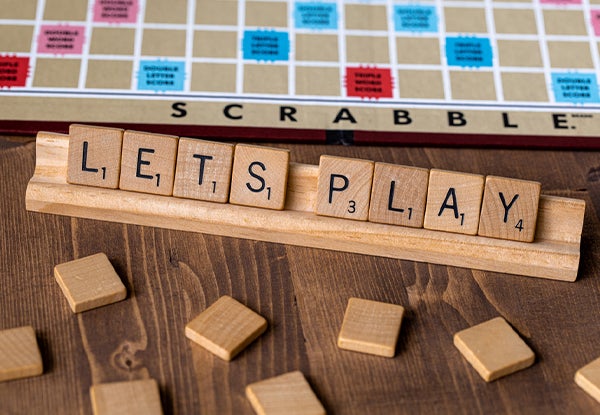
Kids love to play games! So, why not harness that love to make learning fun? This is a great way to keep your child motivated and to put knowledge into practice in the real world.
Here are some games kids love to play that you can use to teach vowel sounds.
Vowel Bingo
Create bingo cards with pictures or words featuring different vowel sounds. Call out the sounds and have kids mark the corresponding images or words.
Go Fish
Create pairs of cards with words that have the same vowel sound. Play Go Fish, asking kids to identify the matching vowel sounds.
Vowel Sound Scavenger Hunt
Hide objects around the room that represent different vowel sounds. Have kids find the objects and identify the vowel sounds in their names.
These are just a few ideas to get you started. The most important thing is to make learning fun and engaging for your child. By using a variety of games and activities, you can help them develop a strong understanding of short and long vowel sounds.
For more information and ideas on what games to play, check out these articles from the Begin blog:
- 10 Fun Activities To Help Your Child Learn Double Consonant Words
- Explore 12 Sensory Activities for Toddlers to Boost Curiosity
- 50 Fun And Simple Preschool Activities For Learning At Home
Provide Plenty of Practice
When it comes to learning vowel sounds—or any new material—repetition is key. Give your child plenty of opportunities to practice identifying, reading, and writing words with short and long vowel sounds.
Often, that will mean reviewing material multiple times before your child “gets it” and can use what they’ve learned in their daily life.
Find time to practice with your child throughout the day so they don’t lose what they’ve already learned. Here are some ways to do that:
- Play games while driving
- Review the vowel sounds while waiting in line
- Set aside focused playtime
- Let your child see how you use vowels in your everyday activities
- Read a story at bedtime (or any time) and highlight the long and short vowel sounds
Be Patient and Supportive

Learning something new that is so fundamental to everything that comes after it may take time. Every child learns differently and at a different rate.
So be patient with your child and provide plenty of positive reinforcement and encouragement in order to build their confidence.
Harness the Power of Technology
In today’s digital age, you can harness the power of technology to make learning even more engaging and effective. How? By supplementing your child’s learning with the HOMER app by Begin.
The HOMER app:
- Uses a research-based approach that includes synthetic phonics instruction to help children learn to read and spell
- Follows a personalized reading pathway based on your child’s skills and interests
- Offers engaging stories, songs, and activities to reinforce reading skills
- Makes learning fun with interactive games and animations
- Can be combined with HOMER Early Learning Kits from Little Passports to create a blended learning experience
- Offers interactive feedback to help your child know if they got the sound and word correct
- Has a parent dashboard to help you track your child’s progress over time
Create Memory Aids
Another effective way to help your child retain the short and long vowel sounds is to create memory aids (a.k.a. a mnemonic device). Some of the simplest are just associating a vowel sound with a specific word and then repeating the sound and the word over and over.
For example, establish the following pairings:
- Short a: /ă/ as in apple
- Long a: /ā/ as in ape
- Short e: /ĕ/ as in elephant
- Long e: /ē/ as in eel
- Short i: /ĭ/ as in insect
- Long i: /ī/ as in idea
- Short o: /ŏ/ as in octopus
- Long o: /ō/ as in open
- Short u: /ŭ/ as in umbrella
- Long u: /ū/ as in universe
Every time you reference the short “a” sound, for example, you could say, “/ă/ as in apple.” That helps to connect the sound to the word so that your child has a frame of reference from which to work.
Celebrate Small Victories
Each child learns at their own pace. That’s why it’s important to celebrate small victories along the way. Whether they’ve recently learned a new vowel sound or decoded a few words independently, praise your child for their progress.
Here are a few ways to visually track what they’ve learned:
- Create a sticker chart where your child can add a sticker for each new vowel sound they learn.
- Make a word wall to display the vowels they can recognize and watch it grow over time.
- Create a journal where your child can draw pictures of their favorite words that contain short and long vowel sounds.
- Make a picture with different spaces to color in, and ask your child to color one spot for each vowel sound they master.
This positive reinforcement will help build their confidence and motivate them to keep learning!
Learning Vowels with Begin
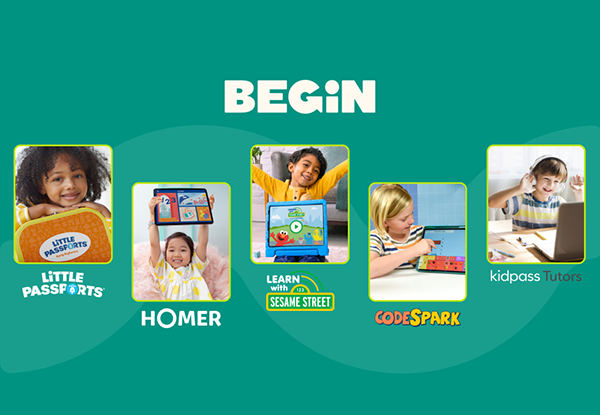
Learning vowels is an essential part of developing kids’ core skills. Playful learning activities are the key—taking something new to be mastered and making it a game!
Our award-winning, kid-safe, ad-free HOMER app does exactly that. It’s full of engaging games for kids that teach them the building blocks of literacy—using it for just 15 minutes a day has been proven to raise early reading scores by 74%!
To help your child learn vowels, start with short CVC words, and then after some practice, move on to long vowel sounds. Need resources along the way? We’re here to support you every step of the way.





